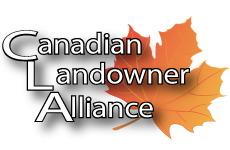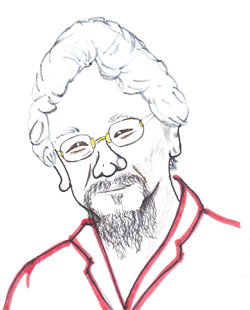Baby-seats, Butternuts and Bureaucrats
Written by Jamie MacMaster | Originally Published in the Landowner Magazine
Several years ago I was giving a Traffic Management lecture to aspiring police officers in Ottawa. The subject for that particular day was Ontario Regulation 613, which covers the use seatbelts and child safety seats.
The appropriate (and legal) seat system is determined by the child's weight, and the regulation goes into some detail to define the difference between an infant (under 9 kg.), a toddler (9 – 18 kg), and a pre-schooler (18 – 36 kg and under 145 cm.).
Seeing some difficulty in the practical enforcement of those sections, one of the brighter lights in the class asked, “So we just ask the mother how much her kid weighs, and then ticket her if he's too heavy?” Not missing my chance to take a kick at a bureaucrat who was down, I cleverly replied, “Why no, not at all. The regulation specifies that you weigh the little bugger using a bilingual, metric scale sold only at approved government outlets.” But my silliness was trumped when Mr. Cynical's hand went back up in the air. “Sir, what does the regulation say about hooking him up… by the nose or the mouth?” Much hilarity ensued, and the rest of the lesson was devoted to the absurdity and pettiness of various bits of legislation, and, speculating about the intellectual capacity of any officer who would stoop to lay the associated charges.
As an example of the former, it would be hard to beat 5 (1) of Ontario Regulation 242/08 which states that it may be okay to cut down a butternut tree, provided that, in the opinion of a person designated by the Minister, the butternut tree is affected by butternut canker to such a degree that it is not necessary to retain the tree at its current location to support the protection or recovery of butternut. Now, if you think that this means that you have to have a bureaucrat's permission to cut down a dead or dying butternut tree, you're absolutely right. And not just any bureaucrat…it has to be a BHA: Butternut Health Assessor. Now this intrigued me so much that I had to find a few things out; just what was involved in becoming a BHA, and, why were BHAs even necessary?
The answer to the first question was simple enough - a one-day course. Basic stuff, really – this is what a butternut tree looks like; this is what an infected butternut tree looks like; these are the papers that have to be completed if a landowner wants to get permission to cut down a butternut tree. But it was when I started asking questions about the necessity of all this BHA-ing that things got murky. I was referred to Rose Fleguel who heads up the Butternut Recovery Program (note the optimistic 'recovery') for the Rideau Valley Conservation Authority, and at this point in my story a little history and biology lesson of the butternut canker might be in order.
Butternut canker is a fungus that first appeared in the southern states and has rapidly spread over the continent. It has more in common with the blight that wiped out all the chestnut trees a century ago than it does with Dutch-elm disease, which is a bug infestation. Rose explained that the legislation that 'protects' butternut trees is based on the premises that human activity is responsible for the spread of the disease, and that some trees may be resistant.
Now, science isn't my forté, but I know a few things about fungi. They are spread by spores – tiny, in many cases invisible, micro-organisms that float about on wind currents until providence provides a touchdown point. If the landing spot is conducive to regeneration, bingo! If you kick a dried-up puffball on a hot day you can watch the thermal currents carry the dust-cloud of spores aloft and the winds disperse it to wherever. So when Rose told me that Butternut Nuts who mailed and transported nuts, seedlings and scions from Dixieland to Durham Ontario were responsible for the spread of the disease, well, let's just say a bit of skepticism was in order. Far more likely that an ill New York wind (or a migratory woodpecker from Ol' Virginny who neglected to sanitize his beak before feasting in Glengarry County) was the culprit.
If you recall, the other point that justifies all this is the presupposition that some trees may be resistant to the canker. So I asked Rose about that. "The assumption is that any tree within 40 meters of infected trees, that isn't showing signs of the disease, is resistant." Ah, the dangers of assumption.
When I brought up the point that perhaps temporary good luck had more to do with the tree's survival than its superior immune system, I got this: "well, we call it putative resistance." Now before you go scrambling for your Oxfords, putative means 'supposed' ...not as in "Dalton McGuinty was supposed to keep his promises”, but more along the lines of "Alison Redford is a supposed conservative." So when I countered putative resistance with pugnacious skepticism, I got this response:
"Well, none of it is 'proven', but it just makes sense.'
Of course it does…not common sense, and certainly not scientific sense, but sense from the perspective of someone who has a government position and salary based on this “putative' science. Putative anthropogenic global warming; putative species decline; putative threats to the entire auto-sector if GM sinks; putative death if you don't take the H1N1 shots; putative threats to wetlands, wells and wellness. Virtually all of the expansion in the only segment of the Canadian economy that has any growth – the public sector – is driven by theories that wouldn't pass a short-arm inspection, let alone the rigours of true scientific inquiry; which demands that outcomes tested by impartial processes support a theory…as opposed to creating make-believe jobs based on 'putative' cause and effect.
And even if you accept the shaky logic that apparently healthy butternut trees should be saved on the off-chance that 'true' resistance as opposed to good luck is saving them, can you give me one reason why a farmer should have to get permission to cut down a dead or dying tree? Rose could.
"In the event that someone saw a butternut log on your property, you would want the paper work because it would 'prove' that you didn't cut down a live tree." So, in 21st century Ontario it has come to this: bureaucrat's signature guarantees your presumption of innocence, not our much-vaunted Charter of Rights and Freedoms.
Never, in the long history of human endeavour, have so many done so little at the expense of so few.




